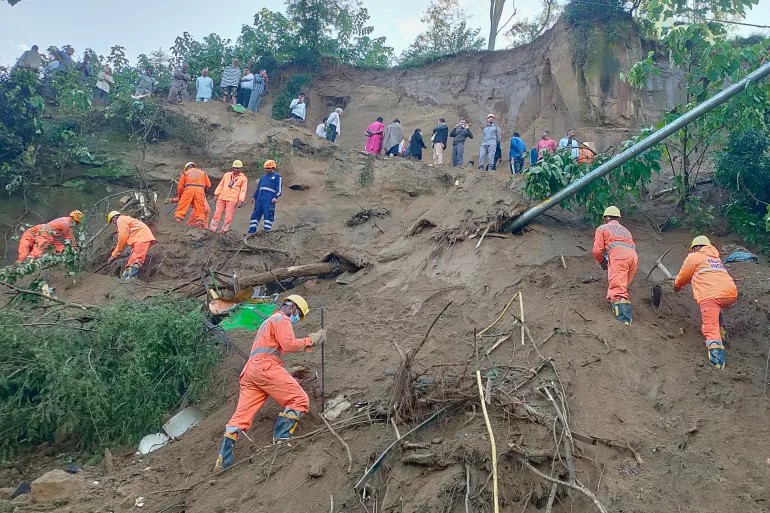
Landslide Strikes Bus in Northern India, 15 Dead as Rescues Continue

 :
| Updated On: 08-Oct-2025 @ 12:18 pm
:
| Updated On: 08-Oct-2025 @ 12:18 pmSHARE
At least 15 people were killed after a massive landslide struck a bus in Himachal Pradesh’s Bilaspur district, according to local authorities. The bus, carrying 20–25 passengers, was traveling along a hilly stretch when the landslide occurred late on Thursday following several days of heavy rainfall. Among the deceased were nine men, four women, and two children. Three injured children were rescued and admitted to a local hospital for treatment, according to a statement from the office of Sukhvinder Singh Sukhu, the state’s highest elected official. Police reported that rescue operations continued on Wednesday to search for other missing passengers, who were believed to have died in the disaster.
Visuals from ANI showed the bus’s mangled wreckage lying on a mountain road, with rescuers digging through debris to reach the people buried when the landslide struck. Television footage from the site showed some rescue workers using heavy machinery to clear mounds of earth while others sifted through mud-soaked belongings. Authorities noted that intermittent rains since Monday had destabilized the fragile mountain slopes, contributing to the landslide.
The landslide prompted condolences from President Droupadi Murmu and Prime Minister Narendra Modi. Extreme rainfall has caused widespread flooding and landslides across South Asia this year, impacting countries including India, Pakistan, Bangladesh, Bhutan, Sri Lanka, Afghanistan, the Maldives, and Nepal. In August, flash floods in Uttarakhand, India, swept away an entire village, while at least 44 people were killed in Nepal over a single weekend due to mudslides and flooding triggered by severe rainfall. The heavy weekend rains in Nepal coincided with the end of the country’s monsoon season, which typically lasts from June to mid-September. Flooding in the capital city of Kathmandu forced the cancellation of all domestic flights on Saturday, highlighting the widespread disruption caused by the intense rainfall.
Experts have linked these extreme weather events to human-induced climate change, which is intensifying South Asia’s monsoon patterns. Traditionally, the monsoon arrives predictably from June to September and again from October to December. However, scientists note that in recent years, the rains have become more erratic, arriving in sudden bursts that dump extreme amounts of water over short periods, followed by prolonged dry spells. These unpredictable patterns have increased the frequency and severity of floods and landslides in mountainous regions, placing both lives and infrastructure at heightened risk.
The Himachal Pradesh landslide illustrates the vulnerability of mountainous regions to extreme rainfall events and highlights the challenges authorities face in disaster preparedness and response. The combination of heavy rains, steep terrain, and fragile slopes makes transportation routes and communities particularly susceptible to such disasters. The ongoing rescue operations underscore the urgency of rapid response measures to save lives and recover victims in areas affected by landslides.
Beyond Himachal Pradesh, the recent spate of floods and landslides across South Asia underscores the broader regional impact of changing climate patterns. Governments in affected countries are increasingly confronted with the need to implement adaptive strategies to mitigate risks, strengthen early warning systems, and enhance infrastructure resilience in areas prone to landslides and flooding. The interplay of climate change, extreme rainfall, and vulnerable terrain continues to pose significant humanitarian and logistical challenges across the region.